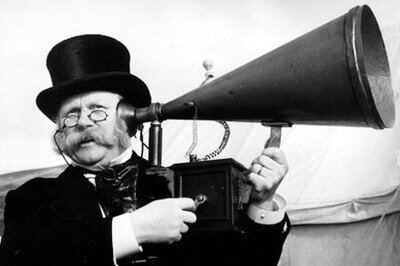4 practical use cases for ERP and the Internet of Things
While the phrase ‘Internet of Things’ (IoT) was coined by English technologist Kevin Ashton in 1999, his posited idea has evolved to become more of a tortoise, rather than a hare, when measured against other news associated with today’s ERP space. This doesn’t suggest that things aren’t moving forward in IoT; however, most of these innovations tend to involve elements that are largely unseen, when compared with more obvious values such as the advent of cloud-computing.
Consequently, we thought we would take a look at some of today’s more practical use cases for integrated ERP and IoT technology, while also suggesting some technological vectors to look for in the future.
1. Sensor integration
Today’s IoT is largely driven by universal communication. In order to create the technical fabric that establishes actionable business value over time, the universal integration of active sensors must be part of any ERP solution. These devices can extend from embedded-ware elements associated with transaction-triggered Near Field Communications (NFC) applications, to hardware components that measure and deliver active data to support the manufacturing process.
Recommended reading: ERP implementation - 11 steps to success
In the case of a commercial NFC example, once a customer sweeps a smart device across an active NFC terminal, that transaction activity is immediately logged and delivered to the local point-of-sale (POS), but can also be pushed downstream to a company’s ERP platform; ultimately residing and interacting with one or more sales, marketing, and/or financial modules. The end-result ensures that all transaction information is always available for short and long-term use by other administrative, sales, marketing and financial processes.
2. Big data management
Application of the phrase “big data” (BD) means just that – big. Since the central value of any successful ERP system lives and dies on the density and “freshness” of its data, BD systems can serve as data filter-points for ERP platforms.
When working to create useful business information over time, IoT sensor arrays serve as the “engine” on the business bus and BD systems represent the “driver”, actively managing and delivering specific datasets that can then be efficiently received by downstream ERP modules.
3. Augmented reality
While this supporting element in the ERP and IoT matrix is again largely driven by sensor technologies, there are numerous middleware-integrated augmented reality devices that serve as interpreters of sensor data. Once activity from these devices is identified, subsequent data can be passed to BD systems for indexing and channelization, before ultimately residing in one or more ERP modules for further action.
A recent example here can be seen in the first-generation of “smart glasses” being applied in futurist manufacturing operations. The process chain is triggered by integrated man/machine activity which is, in turn, converted into data, that ultimately resolves into machine efficiency information on an ERP platform. Once the upstream loop is complete, final results are passed back down to an operator’s helmet display in real-time.
4. Global revenue management
In the same way that activity-driven data can be captured and displayed in concert with “smart glasses”; similarly captured financial data can be also be delivered to and from a local point-of-sale, to an ERP platform for systems management, and on to one or more remote locations for sub-division comparison, analysis, or real time enterprise revenue consolidations.
Again, all of these areas of interest are only beginning to emerge. Nevertheless, based on the level of current development, integration of ERP and IoT technology is likely to become more than just a passing fad and develop into an organic fabric that will ultimately lead to more efficient ERP operations going forward.
Free white paper

ERP Implementation: 9 steps to success
The 9 proven steps you should follow when implementing ERP

Related articles
-

M2M learning: why you need to listen to your production machines
Leverage M2M and IoT to give your manufacturing business a commercial advantage
-

Secret KPI: Why Your ERP Implementation Team Matters More Than Software
Learn how Godlan ensures successful ERP implementation for manufacturers with proven strategies &...
-

IoT ERP and security: is your mobile software full of holes?
A rundown of the security issues faced by IoT ERP users and what you can do about them

